ESD can cause unseen damage to electronic components during manufacture of electronic assemblies and equipment. If an ESD event occurs this can cause immediate or delayed damage. The delayed damage we often refer to as a ‘latent defect’. This can cause a device to malfunction at any moment of its lifespan.
If the damaged component fails immediately, the result can be a board that fail tests and requires rework. This represents lost production and additional manufacturing costs.
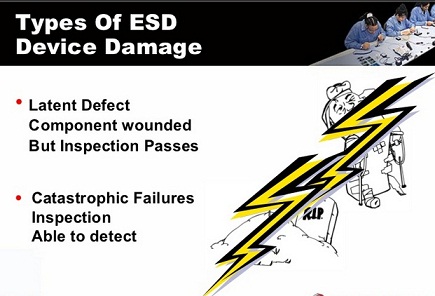
Worse than this, a
component may be partially damaged and weakened. It may suffer a change or
drift in characteristics. It may remain within specification, but fail later
when in use by a customer. It has been estimated that 90% of damaged devices
may be discovered in this way.
This is the most expensive type of failure, as it represents:
- Customer dissatisfaction, and the possibility of loss of product reputation and future sales
- Customer service personnel and facility cost
- Engineers time, possibly for on-site repair with travel, and parts replacement
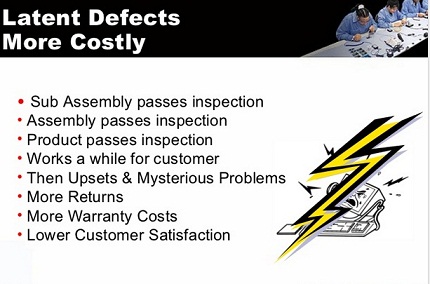
Analysis of non-conforming or defective devices showed that 60-75% were damaged by EOS (electrical overstress) or ESD. This rises to 90% for newer technologies. About 70% of these failures were attributed to damage from incorrectly grounded people.
In manual assembly most ESD arises from charged personnel, if they are not grounded.
Many common activities may generate charges on a person’s body that are potentially harmful to electronic components.
- Walking across carpet: 1,500 to 35,000 volts
- Walking over untreated vinyl floor: 250 to 12,500 volts
- Vinyl envelop used for work instructions: 600 to 7,000 volts
- Worker at bench: 700 to 6,000 volts
- Picking up a common plastic bag from a bench: 1,200 to 20,000 volts
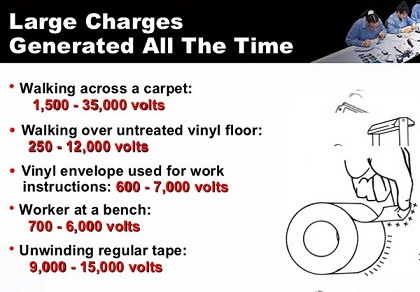
Most people do not feel an ESD shock unless they are charged to over 3000 V (the sensitivity threshold varies between people, and even over parts of the body!). This voltage is quite common in the uncontrolled environment – how many of us have not felt the occasional electrostatic shock in everyday life?
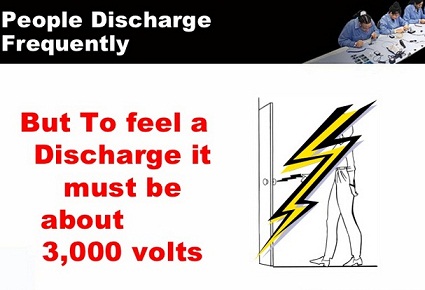
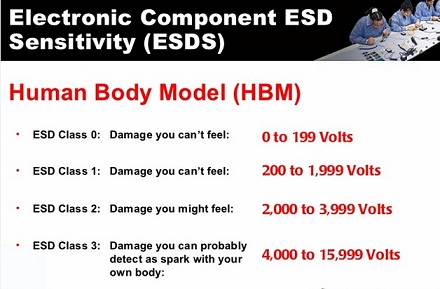
However a
charge of just 30 volts is enough to damage the most sensitive electrical
components. And, most components are at risk from charges at 100 – 200 volts.

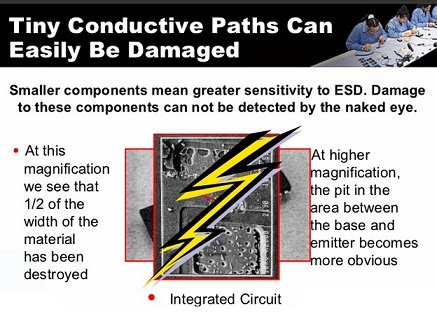
It is essential that you protect sensitive components during the manufacturing, assembly and shipping process. Furthermore, the work area should be grounded for effective anti-static control. This area is often referred to as an Electrostatic Discharge Protected Area (EPA). An EPA could be one small workbench or an entire manufacturing plant.






